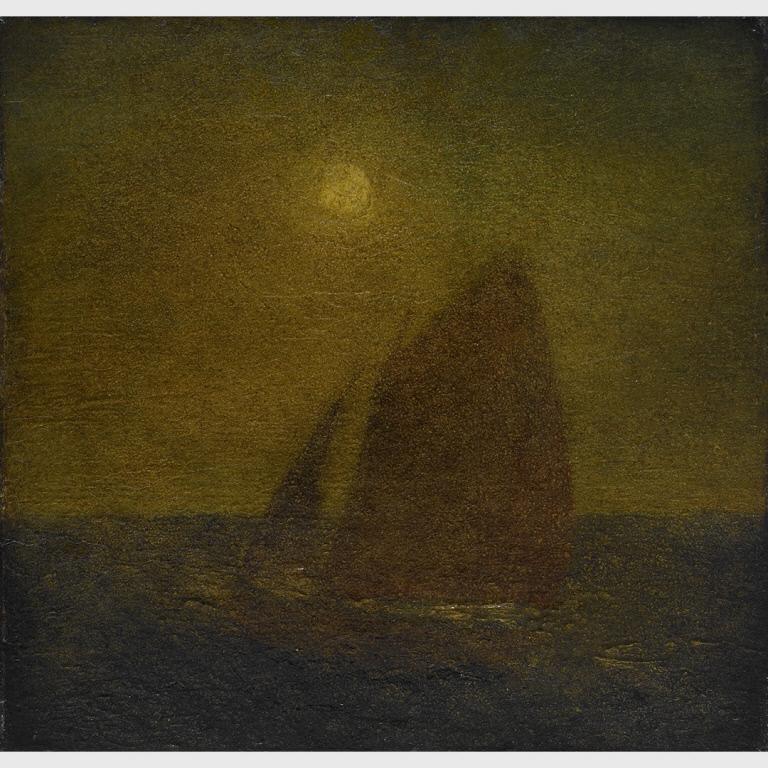Crystal Bridges is fortunate to possess a stable work produced by this great American painter. Located within the Nineteenth-Century Art Gallery, Ryder’s Misty Moonlight is a rare work in regard to the artist’s process and materials. His approach and techniques for this work were more conventional, allowing the painting to exist today in near-pristine condition. The composition depicts a lone watercraft quietly sailing on calm waters of a moonlit sea. Somber shades of olive, umber, and ochre create a dense atmosphere as the moon faintly penetrates the haze and spray. Darkness looms overhead, threatening to shroud the isolated vessel. Full sails contrasted against a solemn sky reveal wind as an unseen atmospheric element allowing the small craft to escape the encroaching darkness. Ryder masterfully marries each element into a unifying and poetic design, creating complete harmony in capturing the ethereal effects and visual mood of his mental image.
From 1900 until his death Ryder produced few works. He became a recluse and maintained contact with the world only through a few trusted friends. During these years Ryder reworked many of his earlier paintings, establishing a simplistic vision for evocation over technical ability which inspired the younger and progressive generation of American artists, including Arthur B. Davies, Kenneth Hayes Miller, and Marsden Hartley. Recognized as a visionary and leader in the “New Movement,” Ryder’s position toward Modernism led to his nomination of honor in the Armory Show of 1913. Ten works by Ryder were featured within the central galleries, a location reserved for the legends that challenged the academic tradition, including Ingres, Delacroix, Goya, Corot, Gauguin, Cézanne, and van Gogh.[3] Ryder was the sole American among them.
“Old Man Ryder” became recognized as America’s Old Master; the sole painter who made up for the dispiriting absence of a great national school of American art in the early twentieth century.




